Hyundai i30 vs Peugeot 308 SW – Differences & prices compared
Everyday use, family trips or long-distance drives – here’s where the differences show.
Discover whether Hyundai i30 or Peugeot 308 SW fits your lifestyle better.
Costs and Efficiency:
Price and efficiency are often the first things buyers look at. Here it becomes clear which model has the long-term edge – whether at the pump, the plug, or in purchase price.
Hyundai i30 has a distinct advantage in terms of price – it starts at 24000 £, while the Peugeot 308 SW costs 30100 £. That’s a price difference of around 6129 £.
Fuel consumption also shows a difference: Peugeot 308 SW manages with 0.80 L and is therefore clearly more efficient than the Hyundai i30 with 5.70 L. The difference is about 4.90 L per 100 km.
Engine and Performance:
Power, torque and acceleration are the classic benchmarks for car enthusiasts – and here, some clear differences start to show.
When it comes to engine power, the Peugeot 308 SW has a distinct edge – offering 195 HP compared to 140 HP. That’s roughly 55 HP more horsepower.
In acceleration from 0 to 100 km/h, the Peugeot 308 SW is distinct quicker – completing the sprint in 7.70 s, while the Hyundai i30 takes 9.60 s. That’s about 1.90 s faster.
In terms of top speed, the Peugeot 308 SW performs a bit better – reaching 225 km/h, while the Hyundai i30 tops out at 197 km/h. The difference is around 28 km/h.
There’s also a difference in torque: Peugeot 308 SW pulls slightly stronger with 300 Nm compared to 253 Nm. That’s about 47 Nm difference.
Space and Everyday Use:
Cabin size, boot volume and payload all play a role in everyday practicality. Here, comfort and flexibility make the difference.
Both vehicles offer seating for 5 people.
In curb weight, Hyundai i30 is a bit lighter – 1291 kg compared to 1475 kg. The difference is around 184 kg.
In terms of boot space, the Peugeot 308 SW offers clearly perceptible more room – 608 L compared to 395 L. That’s a difference of about 213 L.
In maximum load capacity, the Peugeot 308 SW performs evident better – up to 1634 L, which is about 333 L more than the Hyundai i30.
When it comes to payload, Hyundai i30 minimal takes the win – 509 kg compared to 500 kg. That’s a difference of about 9 kg.
Who wins the race?
The Peugeot 308 SW proves to be dominates this comparison and therefore becomes our DriveDuel Champion!
Peugeot 308 SW is the better all-rounder in this comparison.
 @ media.stellantis.com
@ media.stellantis.com
Peugeot 308 SW
Hyundai i30
The Hyundai i30 stands out in the hatchback segment with its sleek design and modern features. It offers a comfortable ride with a well-crafted interior that caters to both driver and passengers. With its emphasis on safety and technology, the i30 provides a balanced driving experience suitable for urban and suburban environments.
details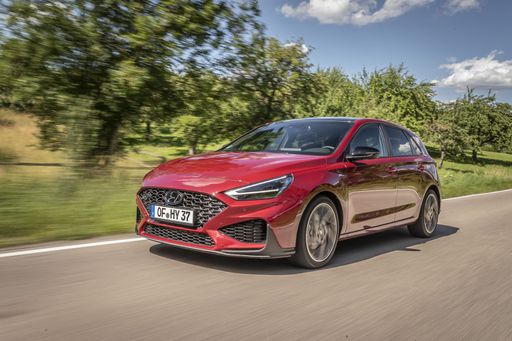 @ hyundai.news
@ hyundai.news
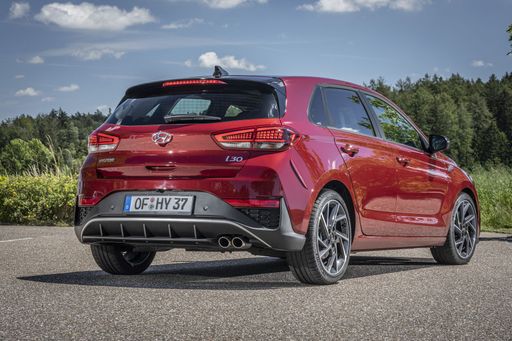 @ hyundai.news
@ hyundai.news
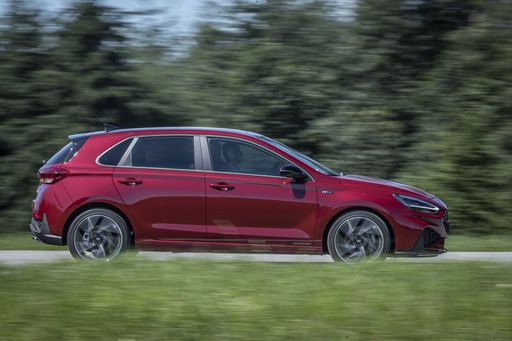 @ hyundai.news
@ hyundai.news
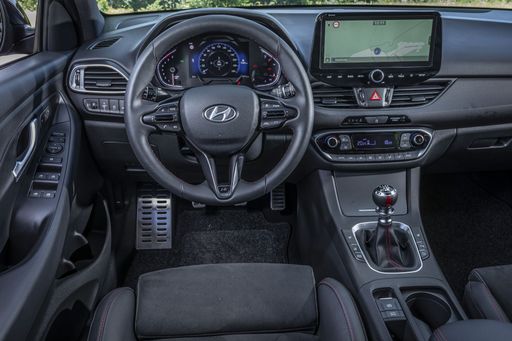 @ hyundai.news
@ hyundai.news
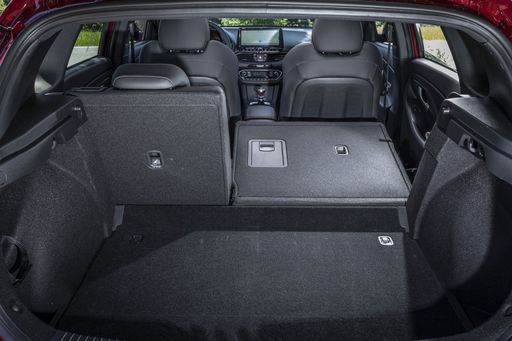 @ hyundai.news
@ hyundai.news
Peugeot 308 SW
The Peugeot 308 SW impresses with its stylish design and practical nature, making it a standout in the estate car category. Its spacious interior is complemented by a high-quality finish, offering comfort for both the driver and passengers. The vehicle also boasts advanced technology features, ensuring a modern and enjoyable driving experience.
details @ media.stellantis.com
@ media.stellantis.com
 @ media.stellantis.com
@ media.stellantis.com
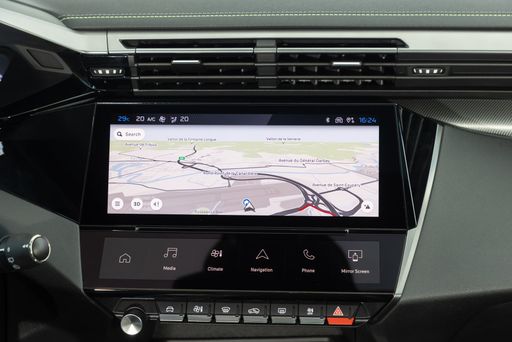 @ media.stellantis.com
@ media.stellantis.com
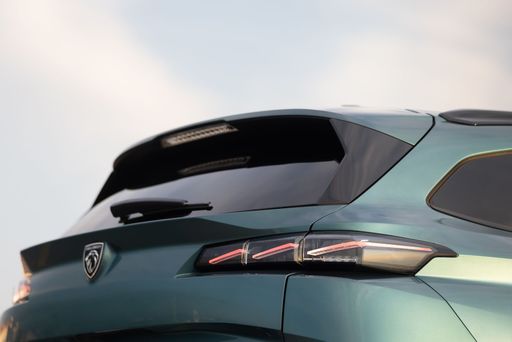 @ media.stellantis.com
@ media.stellantis.com
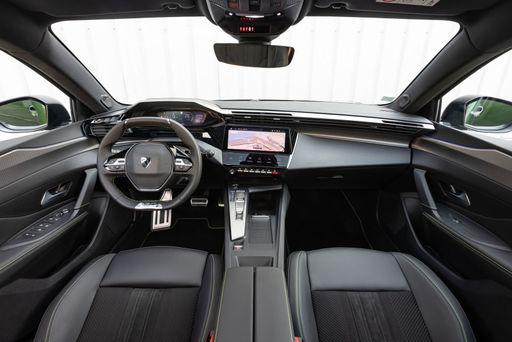 @ media.stellantis.com
@ media.stellantis.com
 @ hyundai.news
@ hyundai.news
|
 @ media.stellantis.com
@ media.stellantis.com
|
|
|
|
Costs and Consumption |
|
|---|---|
|
Price
24000 - 29300 £
|
Price
30100 - 42700 £
|
|
Consumption L/100km
5.7 - 6 L
|
Consumption L/100km
0.8 - 5.1 L
|
|
Consumption kWh/100km
-
|
Consumption kWh/100km
15.30 kWh
|
|
Electric Range
-
|
Electric Range
78 - 410 km
|
|
Battery Capacity
-
|
Battery Capacity
51 kWh
|
|
co2
130 - 136 g/km
|
co2
0 - 134 g/km
|
|
Fuel tank capacity
50 L
|
Fuel tank capacity
42 - 53 L
|
Dimensions and Body |
|
|---|---|
|
Body Type
Hatchback
|
Body Type
Estate
|
|
Seats
5
|
Seats
5
|
|
Doors
5
|
Doors
5
|
|
Curb weight
1291 - 1407 kg
|
Curb weight
1475 - 1791 kg
|
|
Trunk capacity
395 L
|
Trunk capacity
467 - 608 L
|
|
Length
4340 mm
|
Length
4636 mm
|
|
Width
1795 mm
|
Width
1852 mm
|
|
Height
1455 mm
|
Height
1442 mm
|
|
Max trunk capacity
1301 L
|
Max trunk capacity
1402 - 1634 L
|
|
Payload
463 - 509 kg
|
Payload
409 - 500 kg
|
Engine and Performance |
|
|---|---|
|
Engine Type
Petrol, Petrol MHEV
|
Engine Type
Diesel, Electric, Petrol MHEV, Plugin Hybrid
|
|
Transmission
Manuel, Automatic
|
Transmission
Automatic
|
|
Transmission Detail
Manual Gearbox, Dual-Clutch Automatic
|
Transmission Detail
Automatic Gearbox, Reduction Gearbox, Dual-Clutch Automatic
|
|
Drive Type
Front-Wheel Drive
|
Drive Type
Front-Wheel Drive
|
|
Power HP
100 - 140 HP
|
Power HP
130 - 195 HP
|
|
Acceleration 0-100km/h
9.6 - 13.1 s
|
Acceleration 0-100km/h
7.7 - 10.9 s
|
|
Max Speed
178 - 197 km/h
|
Max Speed
170 - 225 km/h
|
|
Torque
172 - 253 Nm
|
Torque
230 - 300 Nm
|
|
Number of Cylinders
3 - 4
|
Number of Cylinders
3 - 4
|
|
Power kW
74 - 103 kW
|
Power kW
96 - 144 kW
|
|
Engine capacity
998 - 1482 cm3
|
Engine capacity
1199 - 1598 cm3
|
General |
|
|---|---|
|
Model Year
2024
|
Model Year
2023 - 2025
|
|
CO2 Efficiency Class
D, E
|
CO2 Efficiency Class
D, A, C, B
|
|
Brand
Hyundai
|
Brand
Peugeot
|
What drive types are available for the Hyundai i30?
Available configurations include Front-Wheel Drive.
The prices and data displayed are estimates based on German list prices and may vary by country. This information is not legally binding.
